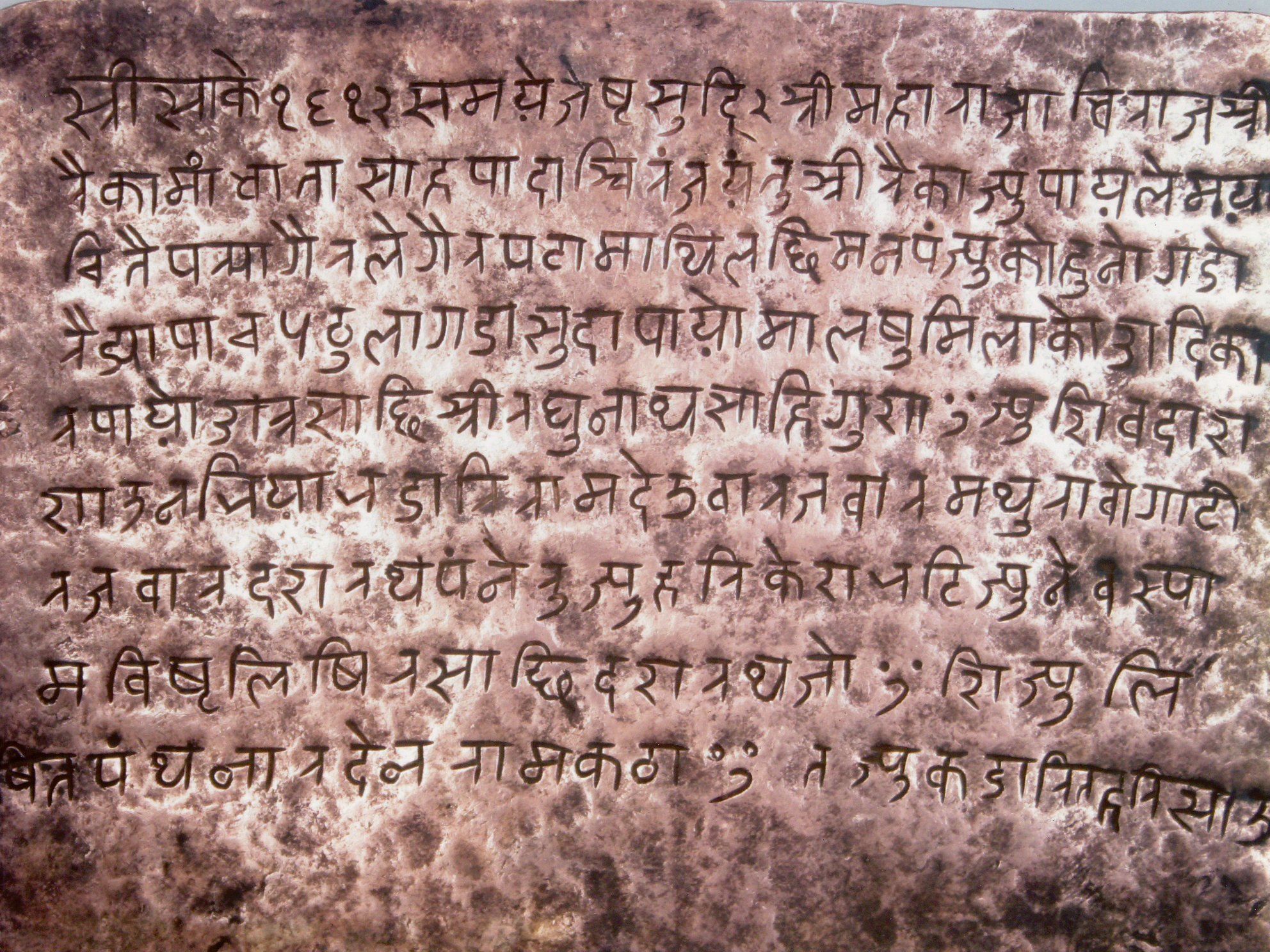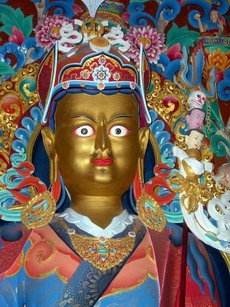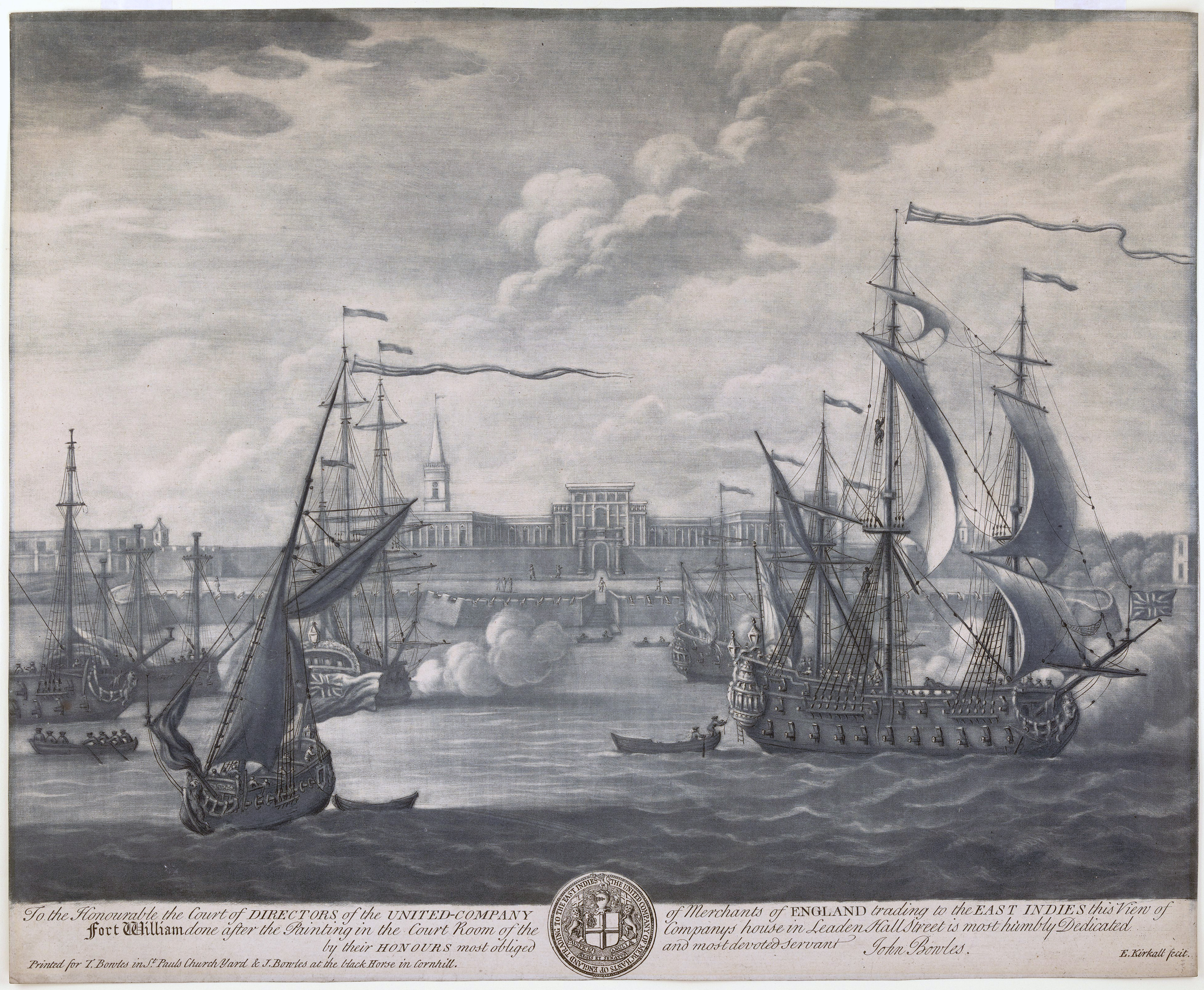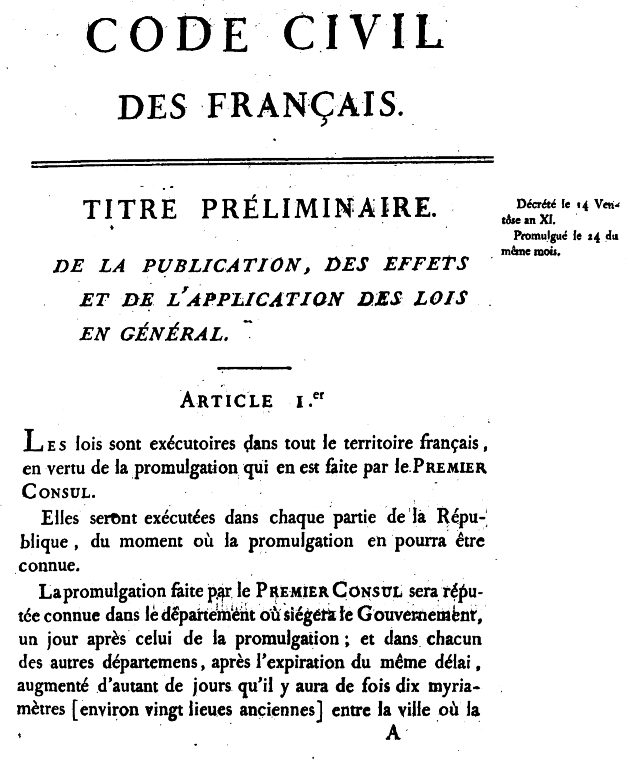|
Kalo Bhari
Kalo Bhari (Nepali: कालो भारी): is a type of forced labor in the era of the Namgyal dynasty in Sikkim where people were propelled to carry load of British consignment to the China via Tibet. Ethnologically Kalo Bhari is a Nepali word which means black loads. It was very despotic system during Zamindari or the landlords reign in Sikkim where the citizens were subjected to all kinds of hardships. Evolution of the Kalo Bhari system The evolution of this practice was started in Sikkim after the contact with the British India The provinces of India, earlier presidencies of British India and still earlier, presidency towns, were the administrative divisions of British governance on the Indian subcontinent. Collectively, they have been called British India. In one .... The literary meaning of the term Kalo Bhari in Nepali is Black Load. KALO BHARI lack Loadwas the name given to a special consignment compactly packed in black tarpaulin. The British sold arms and ... [...More Info...] [...Related Items...] OR: [Wikipedia] [Google] [Baidu] |
Nepali Language
Nepali (; , ) is an Indo-Aryan language native to the Himalayas region of South Asia. It is the official, and most widely spoken, language of Nepal, where it also serves as a '' lingua franca''. Nepali has official status in the Indian state of Sikkim and in the Gorkhaland Territorial Administration of West Bengal. It is spoken by about a quarter of Bhutan's population. Nepali also has a significant number of speakers in the states of Arunachal Pradesh, Assam, Himachal Pradesh, Manipur, Meghalaya, Mizoram and Uttarakhand. In Myanmar it is spoken by the Burmese Gurkhas. The Nepali diaspora in the Middle East, Brunei, Australia and worldwide also use the language. Nepali is spoken by approximately 16 million native speakers and another 9 million as a second language. Nepali is commonly classified within the Eastern Pahari group of the Northern zone of Indo-Aryan. The language originated from the Sinja Valley, Karnali Province then the capital city of the Khasa Ki ... [...More Info...] [...Related Items...] OR: [Wikipedia] [Google] [Baidu] |
Chogyal
The Chogyal ("Dharma Kings", ) were the monarchs of the former Kingdom of Sikkim, which belonged to the Namgyal dynasty. The Chogyal was the absolute monarch of Sikkim from 1642 to 1975, when the monarchy was abolished and the Sikkimese people voted in a referendum to make Sikkim the 22nd state of India. History From 1642 to 1975, Sikkim was ruled by the Namgyal Monarchy (also called the Chogyal Monarchy), founded by Phuntsog Namgyal, the fifth-generation descendant of Guru Tashi, a prince of the Minyak House who came to Sikkim from the Kham province of Tibet. Chogyal means 'righteous ruler', and was the title conferred upon Sikkim's Buddhist kings during the reign of the Namgyal Monarchy. The reign of the Chogyal was foretold by the patron saint of Sikkim, Guru Rinpoche. The 8th-century saint had predicted the rule of the kings when he arrived in the state. In 1642, Phuntsog Namgyal was crowned as Sikkim's first Chogyal in Yuksom. The crowning of the king was a g ... [...More Info...] [...Related Items...] OR: [Wikipedia] [Google] [Baidu] |
Sikkim
Sikkim (; ) is a state in Northeastern India. It borders the Tibet Autonomous Region of China in the north and northeast, Bhutan in the east, Province No. 1 of Nepal in the west and West Bengal in the south. Sikkim is also close to the Siliguri Corridor, which borders Bangladesh. Sikkim is the least populous and second smallest among the Indian states. Situated in the Eastern Himalaya, Sikkim is notable for its biodiversity, including alpine and subtropical climates, as well as being a host to Kangchenjunga, the highest peak in India and third highest on Earth. Sikkim's capital and largest city is Gangtok. Almost 35% of the state is covered by Khangchendzonga National Park – a UNESCO World Heritage Site. The Kingdom of Sikkim was founded by the Namgyal dynasty in the 17th century. It was ruled by Buddhist priest-kings known as the Chogyal. It became a princely state of British India in 1890. Following Indian independence, Sikkim continued its protectorate stat ... [...More Info...] [...Related Items...] OR: [Wikipedia] [Google] [Baidu] |
Kingdom Of Great Britain
The Kingdom of Great Britain (officially Great Britain) was a sovereign country in Western Europe from 1 May 1707 to the end of 31 December 1800. The state was created by the 1706 Treaty of Union and ratified by the Acts of Union 1707, which united the kingdoms of England (which included Wales) and Scotland to form a single kingdom encompassing the whole island of Great Britain and its outlying islands, with the exception of the Isle of Man and the Channel Islands. The unitary state was governed by a single parliament at the Palace of Westminster, but distinct legal systems – English law and Scots law – remained in use. The formerly separate kingdoms had been in personal union since the 1603 "Union of the Crowns" when James VI of Scotland became King of England and King of Ireland. Since James's reign, who had been the first to refer to himself as "king of Great Britain", a political union between the two mainland British kingdoms had been repeatedly attempted and ... [...More Info...] [...Related Items...] OR: [Wikipedia] [Google] [Baidu] |
China
China, officially the People's Republic of China (PRC), is a country in East Asia. It is the world's List of countries and dependencies by population, most populous country, with a Population of China, population exceeding 1.4 billion, slightly ahead of India. China spans the equivalent of five time zones and Borders of China, borders fourteen countries by land, the List of countries and territories by land borders, most of any country in the world, tied with Russia. Covering an area of approximately , it is the world's third List of countries and dependencies by area, largest country by total land area. The country consists of 22 provinces of China, provinces, five autonomous regions of China, autonomous regions, four direct-administered municipalities of China, municipalities, and two special administrative regions of China, Special Administrative Regions (Hong Kong and Macau). The national capital is Beijing, and the List of cities in China by population, most populous cit ... [...More Info...] [...Related Items...] OR: [Wikipedia] [Google] [Baidu] |
Tibet
Tibet (; ''Böd''; ) is a region in East Asia, covering much of the Tibetan Plateau and spanning about . It is the traditional homeland of the Tibetan people. Also resident on the plateau are some other ethnic groups such as Monpa people, Monpa, Tamang people, Tamang, Qiang people, Qiang, Sherpa people, Sherpa and Lhoba peoples and now also considerable numbers of Han Chinese and Hui people, Hui settlers. Since Annexation of Tibet by the People's Republic of China, 1951, the entire plateau has been under the administration of the People's Republic of China, a major portion in the Tibet Autonomous Region, and other portions in the Qinghai and Sichuan provinces. Tibet is the highest region on Earth, with an average elevation of . Located in the Himalayas, the highest elevation in Tibet is Mount Everest, Earth's highest mountain, rising 8,848.86 m (29,032 ft) above sea level. The Tibetan Empire emerged in the 7th century. At its height in the 9th century, the Tibet ... [...More Info...] [...Related Items...] OR: [Wikipedia] [Google] [Baidu] |
British India
The provinces of India, earlier presidencies of British India and still earlier, presidency towns, were the administrative divisions of British governance on the Indian subcontinent. Collectively, they have been called British India. In one form or another, they existed between 1612 and 1947, conventionally divided into three historical periods: *Between 1612 and 1757 the East India Company set up factories (trading posts) in several locations, mostly in coastal India, with the consent of the Mughal emperors, Maratha Empire or local rulers. Its rivals were the merchant trading companies of Portugal, Denmark, the Netherlands, and France. By the mid-18th century, three ''presidency towns'': Madras, Bombay and Calcutta, had grown in size. *During the period of Company rule in India (1757–1858), the company gradually acquired sovereignty over large parts of India, now called "presidencies". However, it also increasingly came under British government oversight, in effect shar ... [...More Info...] [...Related Items...] OR: [Wikipedia] [Google] [Baidu] |
History Of Taxation In India
Taxes in India are levied by the Central Government and the State Governments by virtue of powers conferred to them from the Constitution of India. Some minor taxes are also levied by the local authorities such as the Municipality. The authority to levy a tax is derived from the Constitution of India which allocates the power to levy various taxes between the Union Government and the State Governments. An important restriction on this power is Article 265 of the Constitution which states that "No tax shall be levied or collected except by the authority of law". Therefore, each tax levied or collected has to be backed by an accompanying law, passed either by the Parliament or the State Legislature. Nonetheless, tax evasion is a massive problem in India, ultimately catalyzing various negative effects on the country. In 2019–20, the Direct tax collections reported by CBDT were approximately INR 12.33 trillion. History India has abolished multiple taxes with passage of time and ... [...More Info...] [...Related Items...] OR: [Wikipedia] [Google] [Baidu] |
Legal Codes
A code of law, also called a law code or legal code, is a systematic collection of statutes. It is a type of legislation that purports to exhaustively cover a complete system of laws or a particular area of law as it existed at the time the code was enacted, by a process of codification. Though the process and motivations for codification are similar in different common law and civil law systems, their usage is different. In a civil law country, a code of law typically exhaustively covers the complete system of law, such as civil law or criminal law. By contrast, in a common law country with legislative practices in the English tradition, modify the existing common law only to the extent of its express or implicit provision, but otherwise leaves the common law intact. A code entirely replaces the common law in a particular area, leaving the common law inoperative unless and until the code is repealed. In a third case of slightly different usage, in the United States and other ... [...More Info...] [...Related Items...] OR: [Wikipedia] [Google] [Baidu] |
South Asia
South Asia is the southern subregion of Asia, which is defined in both geographical and ethno-cultural terms. The region consists of the countries of Afghanistan, Bangladesh, Bhutan, India, Maldives, Nepal, Pakistan, and Sri Lanka.;;;;;;;; Topographically, it is dominated by the Indian subcontinent and defined largely by the Indian Ocean on the south, and the Himalayas, Karakoram, and Pamir Mountains, Pamir mountains on the north. The Amu Darya, which rises north of the Hindu Kush, forms part of the northwestern border. On land (clockwise), South Asia is bounded by Western Asia, Central Asia, East Asia, and Southeast Asia. The South Asian Association for Regional Cooperation (SAARC) is an economic cooperation organization in the region which was established in 1985 and includes all eight nations comprising South Asia. South Asia covers about , which is 11.71% of the Asian continent or 3.5% of the world's land surface area. The population of South Asia is about 1.9 ... [...More Info...] [...Related Items...] OR: [Wikipedia] [Google] [Baidu] |
Economy Of British India
The role and scale of British imperial policy during the British Raj (1858 to 1947) on India's relative decline in global GDP remains a topic of debate among economists, historians, and politicians. Some commentators argue the effect of British rule was negative, and that Britain engaged in a policy of deindustrialisation in India for the benefit of British exporters which left Indians relatively poorer than before British rule. Others argue that Britain's impact on India was either broadly neutral or positive, and that India's declining share of global GDP was due to other factors, such as new mass production technologies or internal ethnic conflict. Economic impact of British imperialism William Digby estimates that from 1870 to 1900, £900 million was transferred from India. In the 17th century, India was a relatively urbanized and commercialized nation with a large export trade, devoted largely to cotton textiles, but also silk, spices, and rice. India was the world's main ... [...More Info...] [...Related Items...] OR: [Wikipedia] [Google] [Baidu] |
Sikkim Monarchy
Sikkim (; ) is a States and union territories of India, state in Northeastern India. It borders the Tibet Autonomous Region of China in the north and northeast, Bhutan in the east, Province No. 1 of Nepal in the west and West Bengal in the south. Sikkim is also close to the Siliguri Corridor, which borders Bangladesh. Sikkim is the List of states and union territories of India by population, least populous and List of states and union territories of India by area, second smallest among the Indian states. Situated in the Eastern Himalaya, Sikkim is notable for its biodiversity, including alpine climate, alpine and subtropical climates, as well as being a host to Kangchenjunga, the List of mountains in India, highest peak in India and List of highest mountains on Earth, third highest on Earth. Sikkim's capital (political), capital and largest city is Gangtok. Almost 35% of the state is covered by Khangchendzonga National Park – a UNESCO World Heritage Site. The Kingdom of Sikkim ... [...More Info...] [...Related Items...] OR: [Wikipedia] [Google] [Baidu] |






